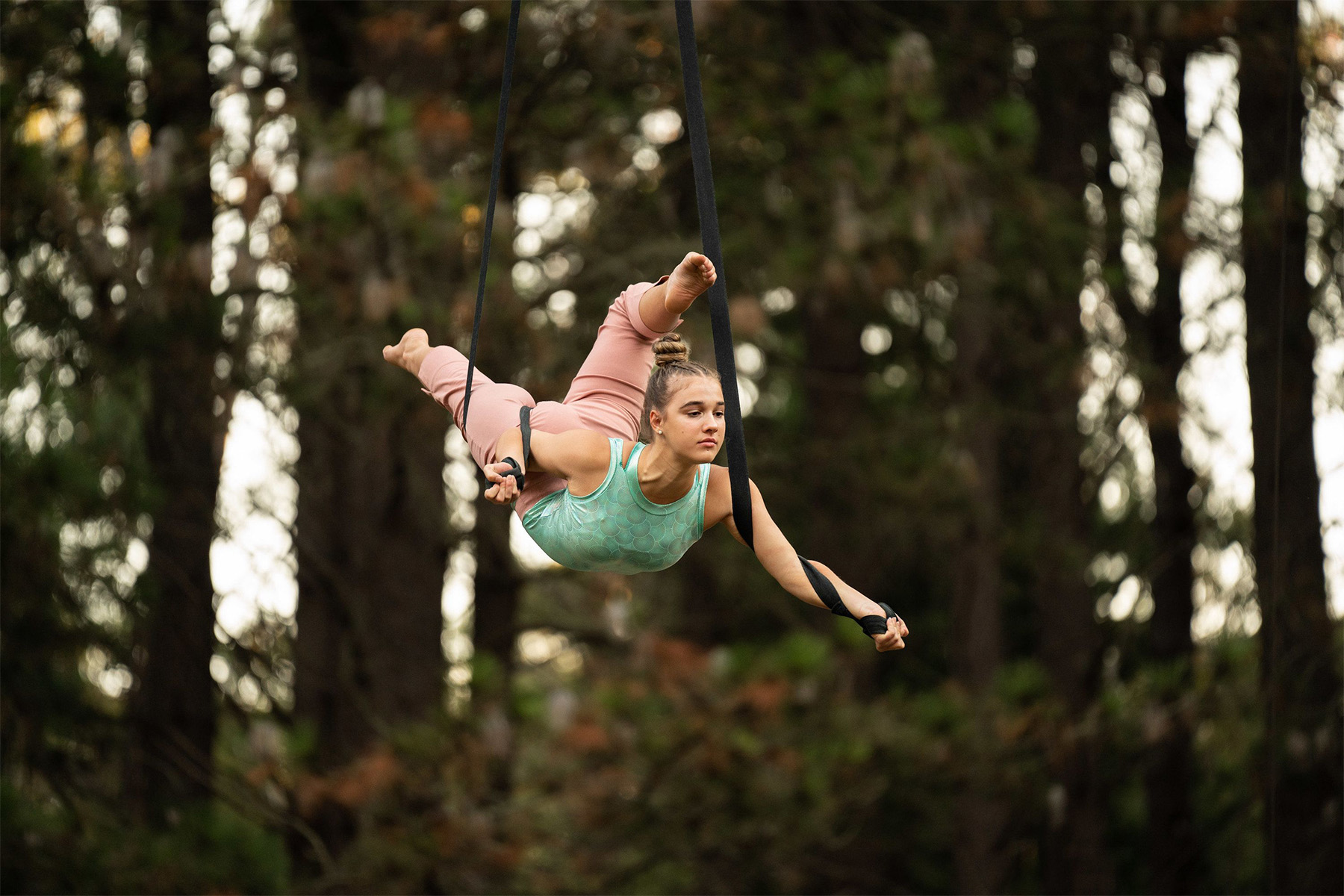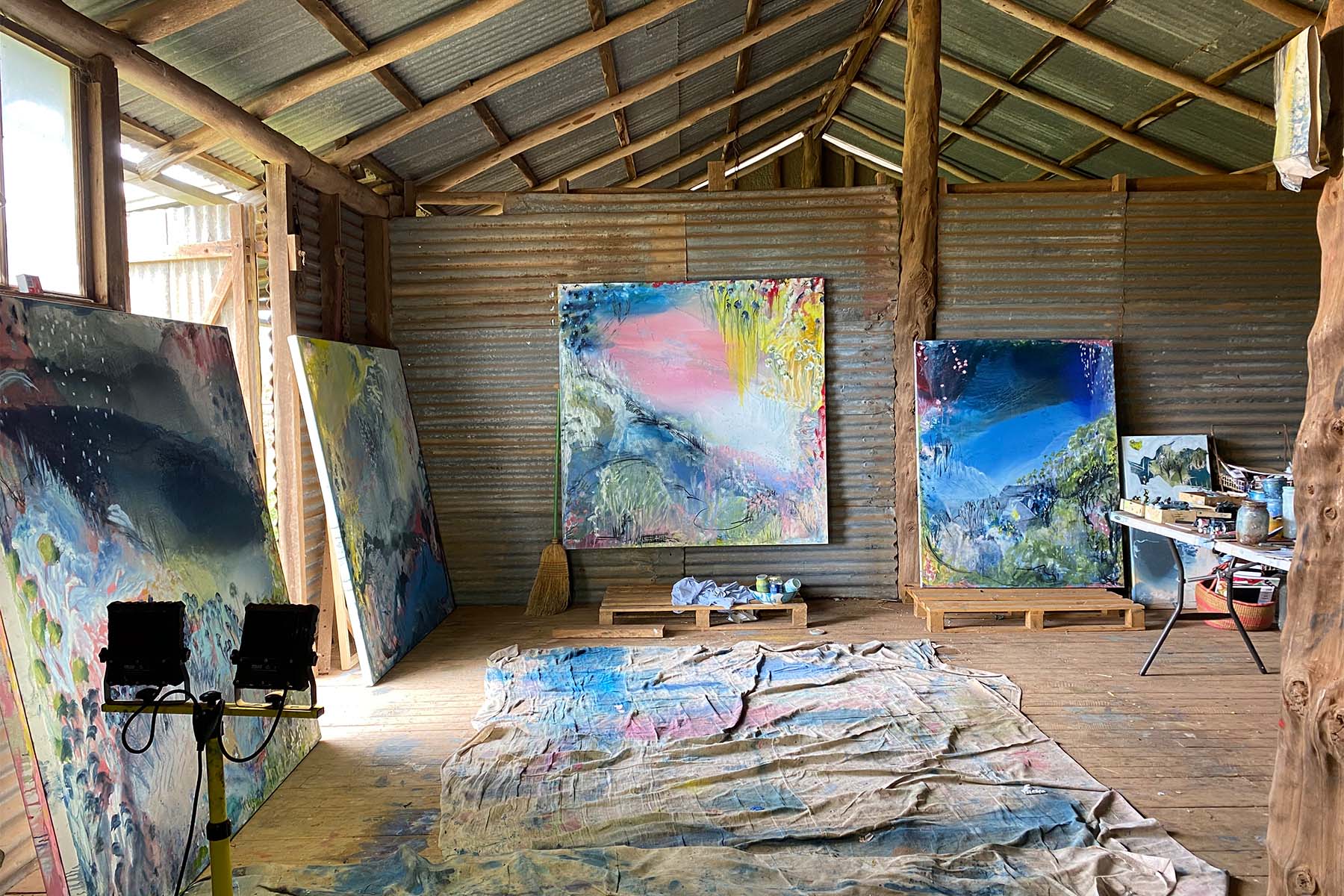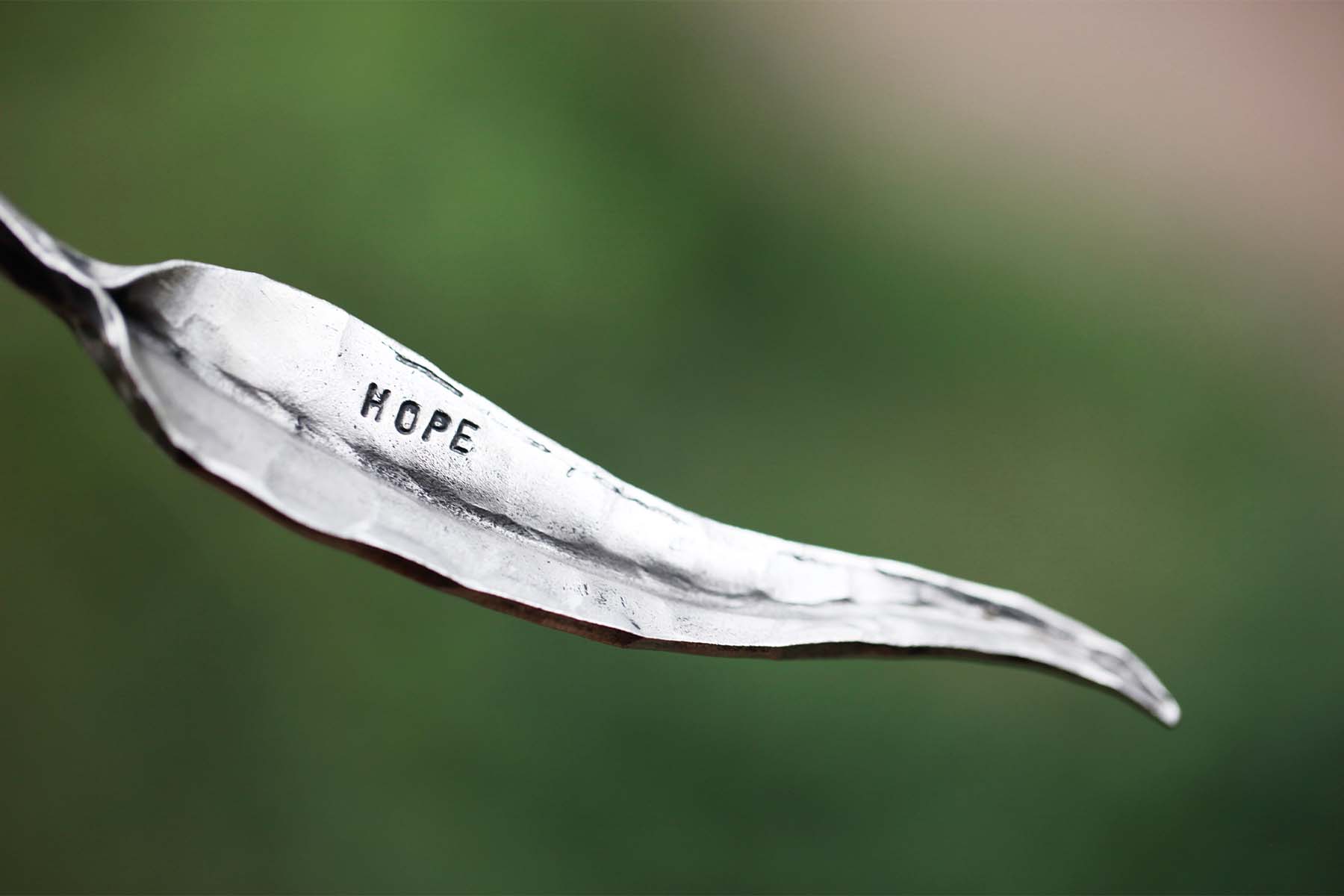
The arts can help us recover from disasters - creatively

‘Creative recovery’ arts projects improve mental health and wellbeing, but better planning and resourcing is needed to support artists and communities
Published 9 June 2023
You might think that the last thing people would want to do after a disaster is make art.
Yet for over three years following the 2019-20 Black Summer bushfires, Fabrik Arts + Heritage in the Adelaide Hills have been delivering numerous visual arts, crafts and writing workshops to their fire-affected community.
One of the many projects, New Art New Walls, brought together families to create paintings for their newly rebuilt houses to help them feel like homes.

These workshops not only offered a chance for families to create new memories together, but they also provided opportunities for connection, respite and emotional processing following the devastation of Black Summer.
Fabrik’s approach is supported by evidence that ‘creative recovery’ – arts programs that are initiated in communities following so-called ‘natural disasters’ – can significantly improve the wellbeing of individuals and communities.
Yet despite many and varied examples of creative recovery in practice, there has been little research of what works best, and why. As climate change increases the likelihood of communities being hit by consecutive disasters, we need to better understand, resource and plan for creative recovery to effectively support these communities.

Circus, poetry, crafts and more
Following the devastating 2009 Black Saturday bushfires, Arts Victoria (now Creative Victoria) and not-for-profit Regional Arts Victoria collaborated to provide Arts Recovery grants to 47 regional Victorian artists and arts organisations in fire-affected communities to produce recovery projects.
The success of these projects has inspired numerous artists and arts organisations to initiate creative recovery projects in the years since. Many of these have been funded by federal, state and local governments – as well as by not-for-profit, community organisations and the private sector – following disasters both in Australia and internationally.
The Black Summer bushfires were followed by a variety of creative recovery projects, including a 50-day-long festival with circus, music and sculpture in Central New South Wales, murals, documentaries, publications, and visual arts exhibitions in Southeast Queensland, and photography, poetry, and handicrafts workshops by Fabrik in the Adelaide Hills.
There are also recent examples of projects after major floods, like drawing and storytelling for children and their families in Hobart in 2018, and contemporary dance performances, audio-documentary projects and a collage club in the Northern Rivers in 2022-23.

Building and restoring connections
A report on Arts Victoria’s and Regional Arts Victoria’s 2009 arts recovery program found that these kinds of projects build and restore connections within disaster-affected communities. Creative workshops and events also provide much-needed opportunities for enjoyment and respite.
For individuals, visual arts and crafts can enable healthy emotional expression through non-verbal creative activities. Conversely, text-based performance and writing activities can help participants find ways to verbally express challenging experiences.
These aspects of creative recovery are especially beneficial following potentially traumatic events, which is supported by research in other related fields such as arts therapy.

Sciences & Technology
The burning of Australia’s nature
My research at the University of Melbourne – under the supervision of academics from arts and cultural management, and disasters and public health – aims to identify the key aspects of arts and cultural participation that contribute to recovery and resilience for disaster-affected individuals and communities.
Creative recovery takes many forms
However, conducting research in this field is complicated by the sheer breadth of creative recovery projects and processes. Modes of participation can vary widely from project to project. Some provide one-off interactions, performances, or exhibitions. Others may consist of weekly workshops over a period of months or years.
To participate in a creative recovery project, a community member might meet an artist in the local library to audio-record their story, like in Lismore for Dear River. Or perhaps they would attend a silk-scarf marbling workshop while they’re in Corryong for the Upper Murray Agricultural Field Days. Or join a community choir in Cardinia Shire as part of A Singing Thing. Or meet up weekly with a local arts and crafts group to knit life-sized ‘chooks’ (slang for ‘chickens’) to gift to the local primary school children.

A more proactive approach needed
But because there is very little research on best practice frameworks for creative recovery, we are missing key pieces of information that would help federal, state and local governments appropriately plan for and resource these projects.
Despite their success, and the proliferation of these projects throughout the country, there is no mention of creative recovery in the new Australian National Cultural Policy, Revive.
Reactive and short-term planning limits the capacity of arts organisations and artists to sustainably deliver creative recovery programs in disaster-affected communities. When funding and other resources are limited, these projects are likely to continue anyway but potentially at the cost of the wellbeing of project leaders, many of whom are disaster-affected themselves.

Arts & Culture
Building intercultural engagement through music
This tension was evident throughout the pandemic: COVID-19 highlighted the important role that creativity plays in individual and collective recovery. Equally, the pandemic revealed that our arts sector is made even more vulnerable at times of crisis.
The predicted increase in the frequency and intensity of disasters due to climate change makes these issues even more urgent. In 2022 alone, 68 per cent of Australians lived in an area affected by at least one ‘natural disaster’.
Research shows that overlapping disaster events result in poorer mental health for individuals and communities than single disaster events. In Australia, where we are continually impacted by ‘cascading’ and ‘compounding’ disasters including fire, flood, drought, storms and pandemic, addressing the impacts of climate change on our collective mental health is especially urgent.
Creative recovery has the potential to address some of these impacts by equipping us with more and better ways to cope in the wake of the climate crisis. But we must plan for this in advance to ensure that creative recovery projects are effective and are not produced at the expense of the wellbeing of artists and arts workers.
Banner: Flying Fruit Fly Circus, Arbour Festival, 2021. Picture: Matt Beaver.
